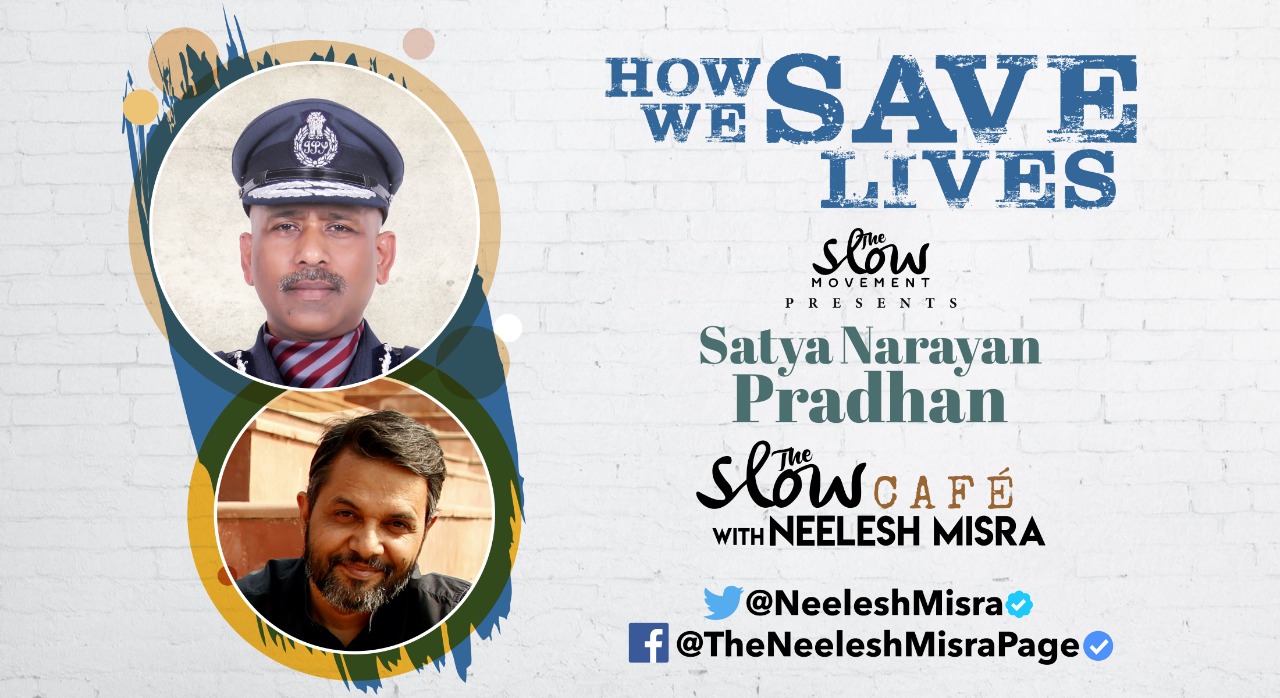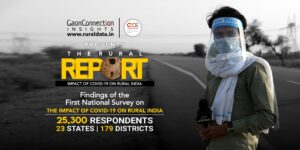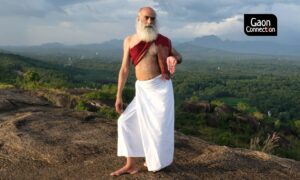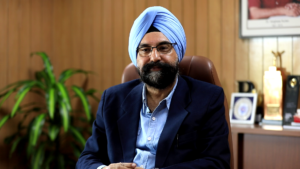From rescuing people stuck in a landslide in Munnar, Kerala, to carrying rescue operations in flood struck Bihar, or evacuating millions before the landfall of a tropical cyclone in the country’s east coast, faceless heroes of the National Disaster Response Force (NDRF) follow the disasters across the length and breadth of our vast country. It is an indication of the selfless work carried out by the members of NDRF, an Indian specialised force constituted “for the purpose of special response to a threatening disaster situation or disaster”.
In order to acknowledge the efforts of these faceless heroes, Neelesh Misra of The Slow Café spoke to Satya Pradhan, director general of NDRF to understand what goes behind the rescue operations and how relentlessly these foot soldiers carry on their work anonymously, saving thousands of lives, unfailingly, in every disaster. Apart from explaining how the force has been actively battling crises in the times of COVID-19, Pradhan also shared a few tips ordinary citizens can implement during a disaster and save their life.
Neelesh Misra: Can you tell us how NDRF came into existence?
Satya Pradhan: It was in the wake of the Bhuj earthquake in 2001 and tsunami in 2004, the Government of India introduced the National Disaster Management Act, 2005 and disaster management became a subject under the Union home ministry. Section 44 of the same Act states a specialised force be set up to handle all kinds of disasters in the country. This paved the way for the birth of NDRF in 2006.
Inspired by paramilitary force, all the employees of the NDRF, from director general to the last person in line, are on deputation who join the team for seven years, train and serve the nation and return to their respective force. In a changing climate, as natural and human-made disasters multiply and their impacts magnify, the importance of this unique force gets even more highlighted.
Neelesh Misra: What are the challenges you face while on duty?
Satya Pradhan: Climate change has been a big factor. Cyclones usually hit post the month of September and summer cyclones are a rarity. However, such cyclones have become a common occurrence in the last few years. The Cyclone Amphan which hit the Bay of Bengal recently is the second super cyclone in the Bay of Bengal in independent India’s time. It’s important to note that in the face of natural disaster, we are nothing. We can’t mitigate a disaster when it happens, it can either be done before or to some extent when it happens or maybe during the restorative phase but we must be humble enough to acknowledge that we are mere pawns; we need to minimise that damage.
Road blocks are a big challenger whenever these cyclones occur. When Cyclone Fani came last year, it destroyed Bhubaneshwar and Puri in Odisha. Our own commander was stuck in the circuit house and was helped by locals and the officers in order to escape from the house but in spite of that, we held to our bases, waited for the cyclone to pass and our functionaries were out on the roads carrying out rescue operations, cleared the Puri-Bhubaneswar road, a very crucial road, in order to resume basic government functioning.
Misra: What can ordinary people do before NDRF takes charge of the situation/location? What are the things which need to be avoided?
Pradhan: People living in high rise apartments should know what to do in case of an earthquake. In the initial minutes and hours of the disaster, there’s nobody to help so people need to equip themselves and become disaster ready. Only those societies/countries have performed well vis-a-vis the disaster where the community is disaster ready, where they’re aware that something will happen because nature cannot be controlled and if it does happen then these are the few things which need to be done.
In coastal areas, people have their survival kits ready. Ideally a survival kit should contain dry food, medicines, belongings of daily use and items like torch, battery – basic stuff which will help one survive for a week or 10 days. People, especially in urban cities need to accept the fact that disaster can happen to anyone and need to be prepared accordingly.
Our geographical landscape of Indo-Gangetic plains is such that the strain in its fault line is the highest in the world. In case there’s a tectonic plate movement, we can witness an earthquake of 8 or 9 on a Richter scale. The community should be trained and complement the government agencies. Communities should be self-sufficient and be aware of the precautionary measures they need to take.
Move first, think and plan later – sounds absurd but it’s a golden principle in disaster management.
Misra: How is the NDRF carrying out its work during the present situation of the coronavirus disease pandemic?
Pradhan: Our motto is “Saving lives and beyond” – handling disaster wherever it is. Even the government has encouraged us, across various forces, to reach out to as many people as we can. We were working in tandem with the Gurudwara Prabandhak Committee and several other NGOs when Chef Vikas Khanna reached out to us. When we witnessed that people were migrating, we started working in areas where our battalion was present. Vikas Khanna aligned his requisites with our presence and we have joined forces to serve people. It continues to be a beautiful partnership.
Infact, it’s not only him, whoever – civil society bodies, individuals – reaches out to us, we facilitate them and serve people in whatever way we can. Even during the onset of the coronavirus pandemic in the last week of January and mid February, we began our preparation because we knew the imminent danger the disease posed. When the first flight of Wuhan [China] was scheduled to arrive, the airport staff sought our help to handle people who could be possible carriers of the virus.
Our preparation began from there since we knew that in the coming months, we will have to tackle every disaster in tandem with COVID – whether it’s a flood or a landslide, we can’t refuse by saying that there is a fear of infection so we won’t carry rescue operations. Hence, we trained the staff at the airport, our team delivered an orientation course and trained them how to handle people from Wuhan. Till date, we have trained 80,000 staff in airports, seaports across India. This has also helped design a new kit for our whole team – explained to them the importance of carrying a sanitiser, mask and how to sanitise a boat.
We even extended help to the state governments explaining to them how our team is on a standby and is ready to extend whatever help they need. For example, in Bihar we regularly went to COVID-19 testing centers and quarantine centers.
*********
Stating the example of Japan where disaster management has become a part of their culture, during his conversation with Misra, Pradhan said it was his dream to embed disaster management in daily lives of the citizens and to ensure every person is disaster ready.
Pradhan also shared some important tips for citizens to follow during the disasters. These include:
- Avoid panic. Though it’s easier said than done. Mock drills, community drills should be carried out everywhere. In Visakhapatnam, there was a gas leakage, had people been aware of what to do when there’s a gas leakage then panic wouldn’t have set in.
- Keep the basics ready. Many of my friends have started making disaster kits – it’s not rocket science. This is most important.
- It’s a very common sense thing – people need to be aware whom to talk to whenever a disaster happens. This basic thing is not in people’s preparation. Dial 100 is not applicable everywhere. Even the administration needs to work towards this in order to raise awareness among the masses.
How Do We Save Lives … @satyaprad1 || #TheSlowCafe https://t.co/UiKs9gRz5D
— Neelesh Misra (@neeleshmisra) August 18, 2020



















